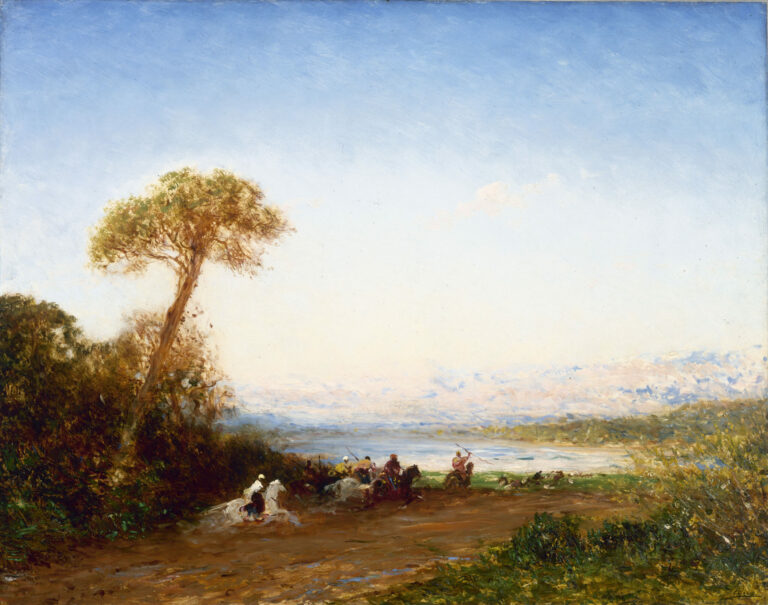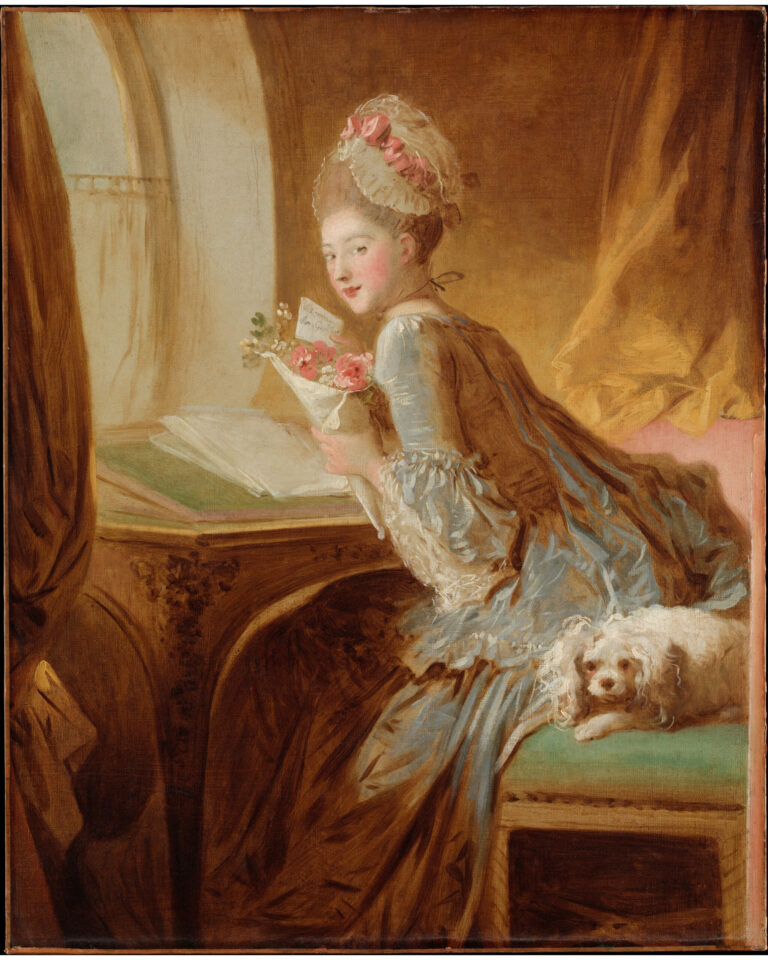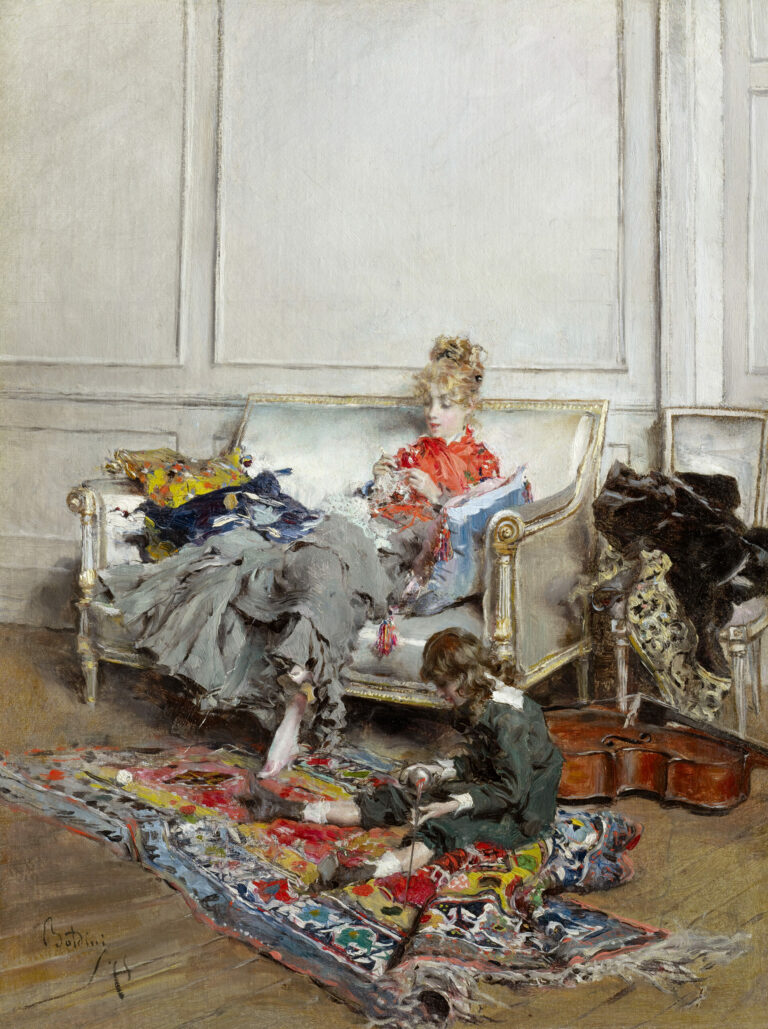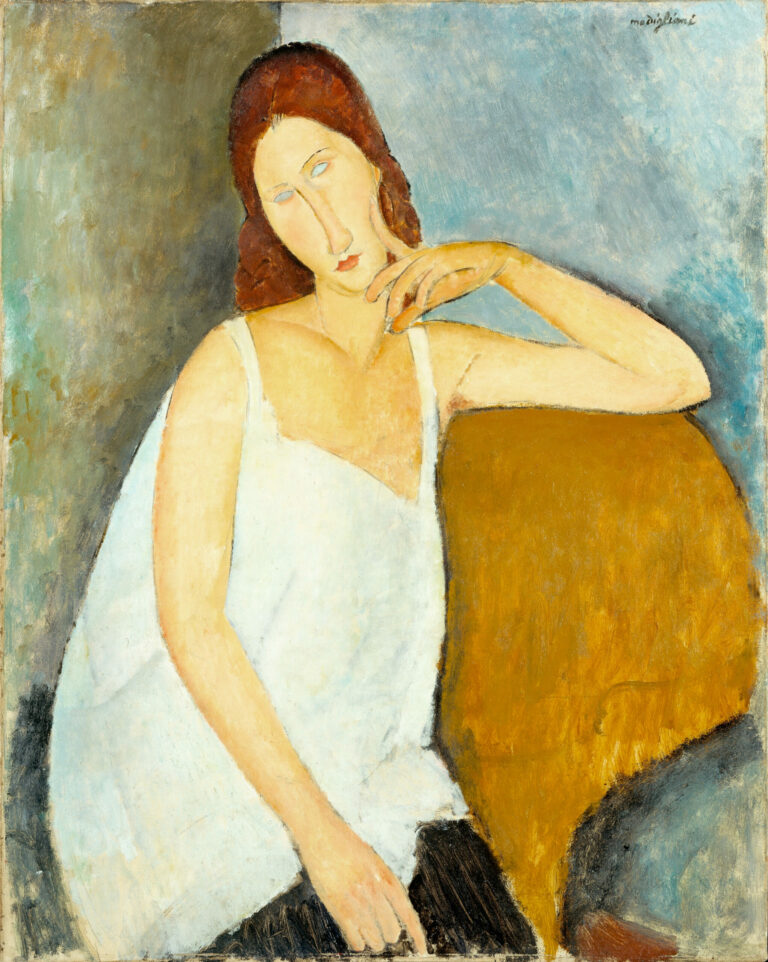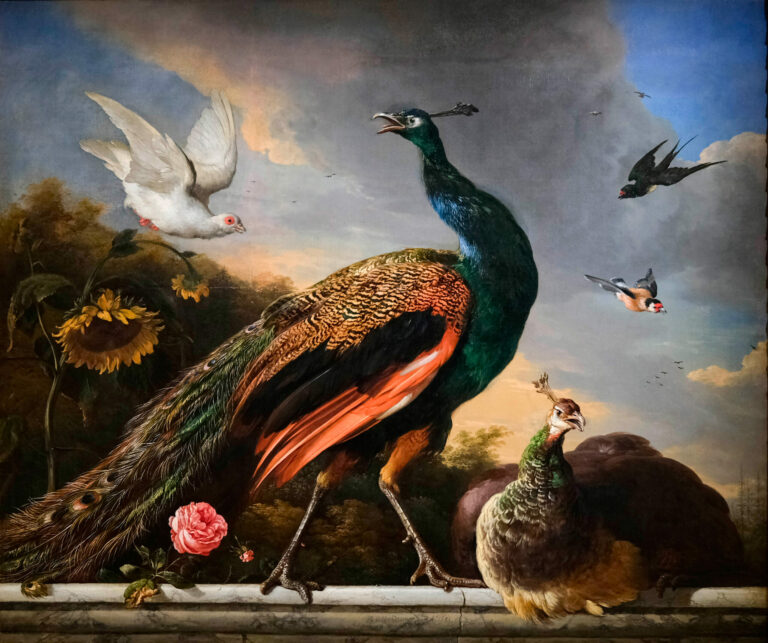This remarkable work by Girodet transports us into the Orientalist universe of the early 19th century, where exoticism intertwines with the technical precision characteristic of the French Neoclassical school.
“Portrait of an Indian” presents an enigmatic figure, draped not in Indian attire as the title suggests, but in a richly detailed Ottoman costume. The distinctive luminosity emanating from the painting, typical of Girodet’s style, accentuates the sumptuous textures of the fabrics and the model’s complexion.
This oil on canvas, which initially served as a modello for a more imposing work housed at the Musée Girodet in Montargis, testifies to the period’s fascination with the Orient and the painter’s ability to capture the nobility and mystery of his subject. The balanced composition and meticulous attention to detail reveal the influence of his master David, while asserting a more romantic personal sensibility.
Further Information
- Study for Portrait of an Indian, by Anne-Louis Girodet-Trioson, ca. 1807
- 16 x 12 7/8 in. (40.6 x 32.7 cm)
- The Metropolitan Museum of Art, Fifth Avenue, New York, displayed in Gallery 804
- https://www.metmuseum.org/art/collection/search/438032
Anne-Louis Girodet-Trioson (1767-1824) was one of Jacques-Louis David’s most brilliant students, perfectly embodying the transition between French Neoclassicism and Romanticism. His residency at the French Academy in Rome proved decisive in the evolution of his pictorial style.
Upon returning to Paris in 1795, he developed a singular artistic approach characterized by literary preciosity, imaginative pictorial effects, and a pronounced taste for exotic subjects and settings. This originality, combined with impeccable technique, made him one of the most admired artists of his time, capable of transcending academic conventions while maintaining remarkable excellence in execution.


